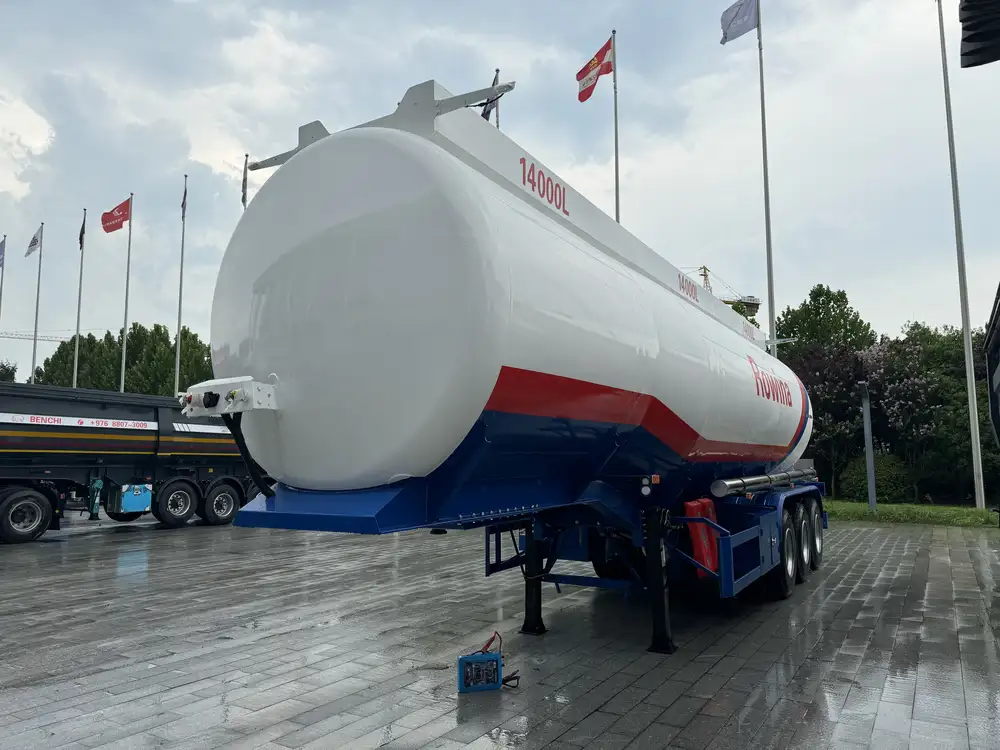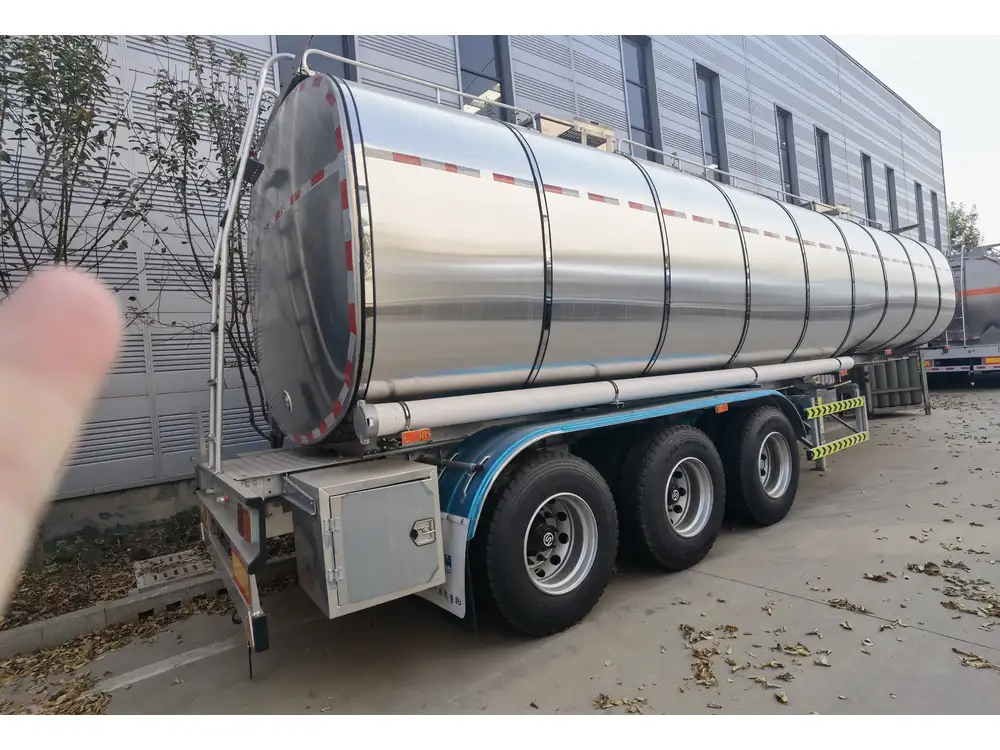When delving into the world of semi-trailers, one question that often arises is, “How many axles are there in a 53-foot flatbed trailer?” This question doesn’t merely invite a straightforward numerical answer; rather, it touches upon a plethora of considerations that shape the performance, safety, and compliance of these vital vehicles in the logistics sector. In this article, we will examine various aspects of axle configurations in 53-foot flatbed trailers, unraveling complexities that impact load capacity, stability, and regulatory compliance.
The Basics: What is a 53-Foot Flatbed Trailer?
Before we dissect the axle aspects, it’s essential to understand the configuration and purpose of a 53-foot flatbed trailer. This trailer type is a staple in the transportation industry primarily used for hauling freight that must be loaded from the sides, such as building materials, machinery, and other oversized items. Its flat surface provides versatility in loading and unloading, while its length maximizes potential cargo volume.
- Dimensions: As the name implies, a 53-foot flatbed trailer measures 53 feet long, typically 8.5 feet wide, and features a standard height of about 13.5 feet.
- Weight Distribution: A critical consideration is how weight is distributed across the trailer, influencing axle load and tire wear.
- Materials: Constructed predominantly from steel or aluminum, these trailers are designed for durability.
Axle Configurations: A Detailed Overview
The configuration of axles on a 53-foot flatbed trailer plays a crucial role in its performance metrics. Below are some of the fundamental configurations:

Standard Axle Configurations
Single-Axle Trailers:
- Number of Axles: 1
- Load Capacity: Typically up to 20,000 pounds.
- Best For: Light loads; not ideal for larger freight due to stability issues.
Tandem-Axle Trailers:
- Number of Axles: 2
- Load Capacity: Generally up to 34,000 pounds (including freight).
- Benefits:
- Improved load distribution.
- Better stabilization during transport.
- Essential for heavier freight.
Tridem-Axle Trailers:
- Number of Axles: 3
- Load Capacity: Can handle up to 50,000 pounds.
- Suitability: Ideal for hauling extremely heavy or oversized loads.
Quad-Axle Trailers:
- Number of Axles: 4
- Load Capacity: Up to 60,000 pounds or more, depending on the specific manufacturer and design.
- Use Case: Commonly used for specialized heavy loads requiring maximum stability and regulatory compliance.
Table of Axle Configurations
| Configuration | Number of Axles | Load Capacity | Use Case | Main Advantage |
|---|---|---|---|---|
| Single-Axle | 1 | Up to 20,000 lbs | Lightweight freight | Lower initial cost |
| Tandem-Axle | 2 | Up to 34,000 lbs | General heavy freight | Better load distribution |
| Tridem-Axle | 3 | Up to 50,000 lbs | Oversized or exceptionally heavy | Maximum load handling |
| Quad-Axle | 4 | Up to 60,000 lbs | Heavy machinery or materials | Superior stability |
Factors Influencing Axle Count Preference

1. Load Requirements
The overall weight of the cargo being transported is perhaps the most influential factor dictating axle choice. Heavier loads necessitate additional axles to distribute weight and enhance structural integrity.
2. Regulatory Compliance
Different jurisdictions impose various regulations concerning weight limits per axle. It is critical to align axle configurations with local, state, and federal laws to avoid penalties or safety hazards.
3. Terrain Considerations
Trailers navigating hilly or rugged terrains may benefit from additional axles, which provide better traction and stability under challenging conditions.

4. Cost Efficiency
While tandem and tridem axles offer greater stability and weight capacity, they can increase initial costs as well as ongoing maintenance expenses.
5. Desired Maneuverability
Fewer axles allow for easier maneuvering in tight spaces. Conversely, more axles enhance stability but may limit turning capabilities.
Load Distribution and Stability
Understanding how to achieve optimal load distribution across axles is vital for maintaining trailer stability. Overloading a single axle can lead to tire blowouts or drivetrain failure, resulting in hazardous situations on the road. To ensure proper weight distribution:
- Weight Distribution Scale: Utilize a scale to measure the load’s weight on each axle. This allows for adjustments before hitting the road.
- Load Securing: Properly securing the load prevents shifting during transit, which can throw off weight distribution and destabilize the trailer.
- Periodic Checks: Conducting frequent checks on axle conditions can identify any issues with alignment or wear that could affect performance.

Impact of Axle Count on Safety Regulations
The number of axles on a 53-foot flatbed trailer not only relates to performance but also to the safety standards set forth by various transportation authorities. Each axle contributes to the overall stability of the unit, making adherence to compliance essential.
Important Regulatory Bodies
- Federal Motor Carrier Safety Administration (FMCSA) – Regulates interstate commercial motor vehicle standards in the U.S.
- Department of Transportation (DOT) – Addresses state-level transportation guidelines.
- International Road Assessment Programme (iRAP) – Proposes standards for global road safety.
Common Questions Regarding Axles in Flatbed Trailers
How Many Axles Can a 53-Foot Flatbed Trailer Have?
- Theoretically, there is no absolute limit; however, most configurations range from 1 to 4 axles. The typical tandem arrangement (2 axles) is most common.
What Is the Maximum Weight Limit per Axle?
- In most cases, the general guideline is not to exceed 20,000 pounds per axle in a tandem configuration. However, regulatory limits may vary by jurisdiction.
What Are the Benefits of Multi-Axle Trailers?
- Additional axles enhance weight distribution, increase stability, and allow for greater load capacities, making them suitable for specialized heavy-haul applications.

Conclusion: Choosing the Right Axle Configuration
Deciding on the appropriate axle configuration for a 53-foot flatbed trailer hinges on a myriad of factors, including load requirements, regulatory mandates, and operational conditions. Companies must rigorously evaluate their unique loading needs and operational environments to make informed choices.
In reviewing the axle configurations and their implications for safety, efficiency, and performance, it becomes clear that an understanding of these elements is paramount. Firms can maximize their operational capabilities and ensure regulatory compliance by selecting the correct axle configuration tailored to their transport requirements.
Ultimately, the calculated decision to opt for a specific axle count—be it standard tandem configurations or heavy-duty tridem setups—can have substantial ramifications for operational success, safety, and cost-effectiveness within the highly competitive transportation market. Being informed not only facilitates compliance but also enhances overall transport performance, ensuring that freight reaches its destination safely and efficiently.



